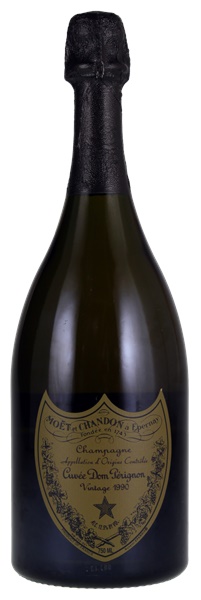Light label condition issue
Removed from a temperature and humidity controlled wine cellar; Obtained by inheritance
Removed from a professional wine storage facility; Purchased from a private collector; Consignor is second owner

Image above is an example. To view the image of the lot, click the item number.
Estimate
(Lisa Perrotti-Brown MW) ...jasmine, cinnamon buttered toast, stewed apples and preserved ginger... firm, fine structure... remarkably frisky and, in harmony with the crisp backbone of acid... elegant and exquisitely balanced....
The profoundly rich 1990 Dom Perignon is a creamy-textured, full styled offering that loses none of its elegance in spite of its flavor authority...
...Extremely powerful, spicy nose –almost a hint of curry spice. Mushroom spectrum of mature Pinot flavours which stood up beautifully...
Youthful aromas of lemon, quince, pear, toast, spice, chalk and red berries. A powerful, very young wine whose fruit builds slowly in the mouth and explodes on the finish.
..bracing, dry fruit flavors and a robust but smooth texture.